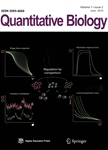Decoding nervous system by single-cell RNA sequencing
Decoding nervous system by single-cell RNA sequencing作者机构:Key Laboratory of Computational Biology Chinese Academy of Sciences-Max Planck Partner Institute for Computational Biology Shanghai Institutes for Biological Sciences Chinese Academy of Sciences Shanghai 200031 China
出 版 物:《Frontiers of Electrical and Electronic Engineering in China》 (中国电气与电子工程前沿(英文版))
年 卷 期:2017年第5卷第3期
页 面:210-214页
核心收录:
学科分类:0710[理学-生物学] 0831[工学-生物医学工程(可授工学、理学、医学学位)] 071010[理学-生物化学与分子生物学] 081704[工学-应用化学] 07[理学] 08[工学] 0817[工学-化学工程与技术] 071006[理学-神经生物学] 0701[理学-数学] 0812[工学-计算机科学与技术(可授工学、理学学位)]
主 题:single cell RNA-seq brain transcriptome brain cell types
摘 要:Background: Mammalian brain are composed of a large number of specialized cell types with diverse molecular composition, functions and differentiation potentials. The application of recently developed single-cell RNA sequencing (scRNA-seq) technology in this filed has provided us new insights about this sophisticated system, deepened our understanding of the cell type diversity and led to the discovery of novel cell types. Results: Here we review recent progresses of applying this technology on studying brain cell heterogeneity, adult neurogenesis as well as brain tumors, then we discuss some current limitations and future directions of using scRNA- seq on the investagation of nervous system. Conclusions: We believe the application of single-celi RNA sequencing in neuroscience will accelerate the progress of big brain projects.



